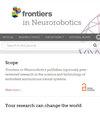Residual learning-based robotic image analysis model for low-voltage distributed photovoltaic fault identification and positioning
IF 2.6
4区 计算机科学
Q3 COMPUTER SCIENCE, ARTIFICIAL INTELLIGENCE
引用次数: 0
Abstract
With the fast development of large-scale Photovoltaic (PV) plants, the automatic PV fault identification and positioning have become an important task for the PV intelligent systems, aiming to guarantee the safety, reliability, and productivity of large-scale PV plants. In this paper, we propose a residual learning-based robotic (UAV) image analysis model for low-voltage distributed PV fault identification and positioning. In our target scenario, the unmanned aerial vehicles (UAVs) are deployed to acquire moving images of low-voltage distributed PV power plants. To get desired robustness and accuracy of PV image detection, we integrate residual learning with attention mechanism into the UAV image analysis model based on you only look once v4 (YOLOv4) network. Then, we design the sophisticated multi-scale spatial pyramid fusion and use it to optimize the YOLOv4 network for the nuanced task of fault localization within PV arrays, where the Complete-IOU loss is incorporated in the predictive modeling phase, significantly enhancing the accuracy and efficiency of fault detection. A series of experimental comparisons in terms of the accuracy of fault positioning are conducted, and the experimental results verify the feasibility and effectiveness of the proposed model in dealing with the safety and reliability maintenance of low-voltage distributed PV systems.基于残差学习的机器人图像分析模型,用于低压分布式光伏故障识别和定位
随着大型光伏电站的快速发展,光伏故障自动识别与定位已成为光伏智能系统的一项重要任务,旨在保障大型光伏电站的安全性、可靠性和生产率。本文提出了一种基于残差学习的机器人(无人机)图像分析模型,用于低压分布式光伏故障识别和定位。在我们的目标场景中,无人飞行器(UAV)被部署来获取低压分布式光伏电站的移动图像。为了获得理想的光伏图像检测鲁棒性和准确性,我们在无人机图像分析模型中集成了基于 YOLOv4 网络的残差学习和注意力机制。然后,我们设计了复杂的多尺度空间金字塔融合技术,并将其用于优化 YOLOv4 网络,以完成光伏阵列内部故障定位的细微任务,其中 Complete-IOU 损失被纳入预测建模阶段,从而显著提高了故障检测的准确性和效率。在故障定位精度方面进行了一系列实验比较,实验结果验证了所提模型在处理低压分布式光伏系统安全性和可靠性维护方面的可行性和有效性。
本文章由计算机程序翻译,如有差异,请以英文原文为准。
求助全文
约1分钟内获得全文
求助全文
来源期刊

Frontiers in Neurorobotics
COMPUTER SCIENCE, ARTIFICIAL INTELLIGENCER-ROBOTICS
CiteScore
5.20
自引率
6.50%
发文量
250
审稿时长
14 weeks
期刊介绍:
Frontiers in Neurorobotics publishes rigorously peer-reviewed research in the science and technology of embodied autonomous neural systems. Specialty Chief Editors Alois C. Knoll and Florian Röhrbein at the Technische Universität München are supported by an outstanding Editorial Board of international experts. This multidisciplinary open-access journal is at the forefront of disseminating and communicating scientific knowledge and impactful discoveries to researchers, academics and the public worldwide.
Neural systems include brain-inspired algorithms (e.g. connectionist networks), computational models of biological neural networks (e.g. artificial spiking neural nets, large-scale simulations of neural microcircuits) and actual biological systems (e.g. in vivo and in vitro neural nets). The focus of the journal is the embodiment of such neural systems in artificial software and hardware devices, machines, robots or any other form of physical actuation. This also includes prosthetic devices, brain machine interfaces, wearable systems, micro-machines, furniture, home appliances, as well as systems for managing micro and macro infrastructures. Frontiers in Neurorobotics also aims to publish radically new tools and methods to study plasticity and development of autonomous self-learning systems that are capable of acquiring knowledge in an open-ended manner. Models complemented with experimental studies revealing self-organizing principles of embodied neural systems are welcome. Our journal also publishes on the micro and macro engineering and mechatronics of robotic devices driven by neural systems, as well as studies on the impact that such systems will have on our daily life.
 求助内容:
求助内容: 应助结果提醒方式:
应助结果提醒方式:


